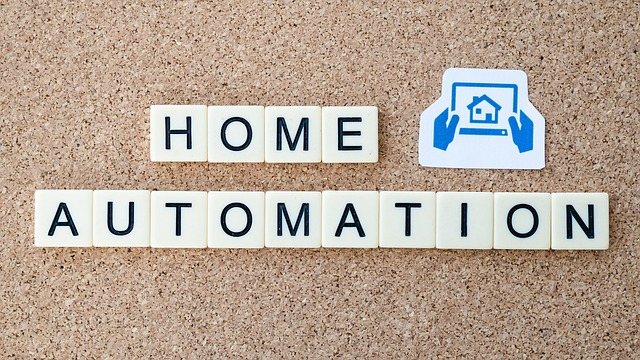Why Smart Kitchens Are More Than a Fad
Not long ago, the kitchen was just a place for chopping, stirring, and hoping you didn’t burn dinner. Today, it’s turning into a digital command center. Traditional setups—manual timers, notebooks full of recipes, overcooked leftovers—are slowly giving way to streamlined, tech-powered environments.
What’s fueling the shift? Simple: time, precision, and less waste. People want meals on the table faster, with fewer missteps. Smart ovens preheat on your way home. Fridges tell you when your spinach is going south. Voice assistants walk you through recipes with zero scrolling. Efficiency isn’t just for pros anymore; it’s becoming the new baseline.
There’s a sustainability edge here, too. Inventory-tracking tech cuts food waste. Energy-saving modes on appliances trim utility bills without compromising performance. Digital kitchens aren’t about flashy gadgets for the sake of it—they’re about solving frustrating, everyday problems.
So no, smart tech in the kitchen isn’t a gimmick—it’s a grip on your time, wallet, and sanity. And that’s what makes it stick.
Smart Appliances Changing the Game
Let’s skip the buzzwords and head straight into the kitchen. The latest generation of smart appliances isn’t just flashy—it’s practical, and it’s changing how people cook, shop, and even think about food.
Start with fridges. Smart models today do more than keep things cold. They track what’s inside, monitor expiration dates, and send reminders when you’re running low. Some can even sync with grocery delivery services, so you’re never out of eggs, or worse—coffee.
Then there’s the oven. Traditional preheat-and-guess methods are being phased out. Now, you’ll find ovens with built-in sensors that adjust temperature based on what you’re cooking. Want to start dinner from the couch? Remote control features let you preheat or check on meals from your phone. It’s hands-off cooking done right.
As for smaller but mighty gadgets—coffee makers, air fryers, blenders—they’re syncing with apps to offer presets, schedules, and custom profiles. You can brew your perfect cup before your feet hit the floor or set up a post-workout smoothie without lifting more than a finger.
These tools don’t just add convenience—they shift the entire flow of how meals come together. They’re a quiet revolution on your countertop.
Connected Cooking: When Tech and Recipe Meet
Gone are the days of squinting at your phone with floury hands. Smart displays like the Nest Hub and Amazon Echo Show are stepping in as the modern cooking coach—giving you step-by-step instructions, timers, and video guidance without needing a tap. Add a voice assistant to the mix, and you get hands-free control over the whole process. You can say things like “How many teaspoons in a tablespoon?” or “Set a timer for 12 minutes,” and get it done mid-sauté.
Real-time feedback is where it levels up. Some systems now alert you if the pan’s too hot or if you skipped a step. Others will auto-adjust cooking times based on what they know about your oven or your altitude. It’s not magic, but it’s close.
Then there’s the smart recipe apps. They’re not just browsing tools anymore—they adapt. Apps like Whisk and Samsung’s SmartThings Cooking analyze what’s in your fridge and suggest meals from what you already have, saving time and food waste. It’s like having a digital sous-chef that knows your pantry better than you do.
Connected cooking isn’t about showing off—it’s about making easier, faster, more precise meals with what you’ve already got. If it keeps you out of the drive-thru and in front of your stove a few more nights a week, that’s a solid win.
Energy Efficiency and Sustainability
Smart kitchens don’t just offer convenience—they also help tackle energy use and waste. As sustainability becomes a top priority for households, today’s appliances are being designed with eco-conscious features that save both money and resources.
Lowering Your Power Bill
Many smart appliances now come equipped with energy-saving modes and automation that help reduce electricity usage without sacrificing performance.
- Smart ovens preheat only when you need them, reducing standby energy consumption.
- Refrigerators adjust their cooling cycles based on usage patterns, optimizing energy efficiency throughout the day.
- Smart plugs and connected outlets allow users to monitor energy usage in real time and turn devices off remotely.
Waste Reduction Tools
Reducing food waste is a major benefit of smart kitchen tools. With real-time inventory data and meal planning support, you can shop smarter and cook only what you need.
- Inventory tracking notifies you of expiring ingredients before they go bad.
- Smart scales and portion calculators help minimize over-serving and leftovers.
- Digital meal planning tools can suggest recipes using ingredients already in your fridge or pantry.
Water-Saving Technology
Smart dishwashers and faucets now include advanced sensors and settings that significantly reduce water usage during daily kitchen routines.
- Load-sensing dishwashers use only the water necessary for each cycle.
- Pre-wash detection systems eliminate the need for rinsing dishes beforehand.
- Eco-modes and delay settings take advantage of off-peak water usage times, optimizing overall efficiency.
By integrating these technologies, smart kitchens are becoming powerful allies in creating more sustainable homes.
Voice and App Control: Convenience in Your Pocket
You don’t need to grab your phone with flour-covered hands or walk across the kitchen to change the oven temp. Voice control with Alexa, Google Assistant, and Siri is making that a thing of the past. Want to preheat the oven, start the coffee maker, or check if the fridge door is open? Just say the word. It’s not just about convenience—it’s about staying focused while your kitchen works in sync with you.
The tech doesn’t stop at voice. Many smart kitchens now run through a single app that pulls in everything—appliance controls, inventory, recipes, and energy usage. Instead of toggling between six different interfaces, you’ve got one central hub. Fewer swipes, less guesswork.
Even better, you can build routines that match real life. Schedule your slow cooker to start before your morning meeting. Get a notification when your dishwasher finishes. Set your espresso machine to fire up before the alarm even goes off. Automation isn’t about removing the human touch—it’s about giving you the room to focus on what matters: cooking when you want, how you want.
Customization and User Preferences
Smart kitchens aren’t just about saving time—they’re about getting things done your way. Think smart cookers that don’t just follow instructions—they learn them. Your preferred doneness for a steak? It remembers. That perfect fluffy consistency for jasmine rice? Locked in. The more you use it, the more it adapts to your cooking style, taking the guesswork out of regular meals.
Then there’s allergy and dietary customization. Today’s systems go beyond ingredient swapping. They can flag allergens, suggest alternatives, and generate weekly plans built around your restrictions—whether it’s dairy-free, low-sodium, or fully plant-based. Less label reading. More peace of mind.
And for the busy or the forgetful, adaptive notifications are a game changer. They adjust based on your habits—whether you tend to skip lunch or like a heads-up before your commute ends. These reminders aren’t just set-it-and-forget-it alarms—they’re living schedules that mold around your day.
When your kitchen starts to know you, cooking stops feeling like a chore. It starts feeling like a service. Quiet, helpful, and always a step ahead.
Challenges and What to Watch For
Smart kitchens may feel like the future, but they’re not without friction. First—privacy. Always-on devices can be incredibly useful, but they also collect data… constantly. Voice assistants are listening for commands, fridges track what’s inside, and apps log your usage in granular detail. If you’re not comfortable with companies knowing when you cook pasta or how often you restock broccoli, you’ll need to dig into device settings and get choosy with which ecosystems you trust.
Then comes compatibility. Most brands want to lock you into their own suite of products, which means a fancy smart oven from one company may refuse to chat nicely with your assistant from another. One app might control your coffeemaker, while a different app manages your pantry scanner. It’s not impossible to make it all work—but expect some duct tape and patchwork along the way.
Finally, let’s talk setup. Smart kitchens sound plug-and-play, but they’re not. There’s a learning curve. Firmware updates. App onboarding. Calibration. Expect to troubleshoot in the beginning—and maybe even later. The payoff is there, but only if you’re good with a bit of digital elbow grease upfront.
Future-Proofing Your Kitchen
Tomorrow’s kitchen isn’t about fancy gadgets—it’s about adaptability. Modular appliances are starting to dominate attention, giving users the flexibility to swap or upgrade individual components without overhauling an entire system. Think induction tops you can rearrange or smart ovens that get smarter over time with firmware updates. It’s plug, play, and iterate, not rip and replace.
AI is stepping deeper into the mix too. Meal planning is getting less about guesswork and more about data. Smart systems can now recommend meals based on what food is in your home, your dietary needs, and your cooking habits. Over time, the software learns your rhythm, suggesting recipes before you even think to ask. It’s a quiet but powerful shift from reactive to predictive cooking.
And smart kitchens aren’t living in a bubble anymore. They’re syncing with the rest of the smart home—thermostats, calendars, fitness trackers. Imagine a setup that adjusts oven times based on your arrival from work or recommends lighter meals after a tough workout logged on your wearable.
The pieces are fitting together. The kitchen is no longer just where you cook—it’s transforming into a responsive, learning hub inside a connected home system.
For more culinary perspective, check out Flavor Trends for 2023 – What You Need to Know.
Final Take: Cooking Smarter, Not Harder
Smart kitchens are more than just modern showpieces—they offer meaningful upgrades to how we cook, eat, and manage our time. But like any innovation, their value depends on how you use them.
Start Small, Solve Big
Adopting smart tech doesn’t mean replacing everything overnight. The key is identifying your biggest daily challenges in the kitchen and introducing solutions that directly address them.
- Tired of guessing when groceries expire? Try a smart fridge with inventory tracking.
- Burn dinner often? A sensor-driven oven might save your meals.
- Juggling mealtime with a busy schedule? Use voice assistants to automate prep.
Focus on Long-Term Benefits
Smart kitchens aren’t just about gadgets—they’re about efficiency and ease. Implementing even one or two well-chosen devices can save hours each week and reduce stress.
- Automate repetitive tasks
- Cut down on food waste
- Gain more control over energy use and costs
The Future is Already Here
The innovations reshaping the modern kitchen aren’t a passing trend. They’re designed to grow with you, update regularly, and integrate smoothly into daily life. Whether you’re a meal-prep minimalist or a passionate home chef, smart kitchens can help you cook better—with less effort.
Remember: Start thoughtfully, invest in what brings value, and let technology enhance—not complicate—your culinary routine.

 Kennethony McKenna played a vital role in helping build Food Smart Base, contributing his expertise and dedication to the project’s development. His efforts supported the platform’s growth into a reliable source of food news, nutritional advice, and culinary insights, ensuring that it serves readers with both accuracy and value.
Kennethony McKenna played a vital role in helping build Food Smart Base, contributing his expertise and dedication to the project’s development. His efforts supported the platform’s growth into a reliable source of food news, nutritional advice, and culinary insights, ensuring that it serves readers with both accuracy and value.